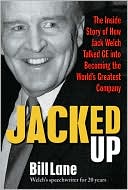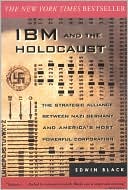Soul of a New Machine
Computers have changed since 1981, when Tracy Kidder indelibly recorded the drama, comedy, and excitement of one company's efforts to bring a new microcomputer to market. What has changed little, however, is computer culture: the feverish pace of the high-tech industry, the mystique of programmers, the go-for-broke approach to business that has caused so many computer companies to win big (or go belly up), and the cult of pursuing mind-bending technological innovations. By tracing computer...
Search in google:
First published in the 1980s, this Pulitzer Prize-winning story of 30 whiz kids at Data General and their herculean efforts to create a groundbreaking supercomputer still holds tremendous pertinence in today's e-dominated society. The New York Times - Christopher Lehmann-Haupt All of Mr. Kidder's hopes for his book have been fulfilled. It does give us a vivid picture of the computer business. . . . But I have to emphasize that what I admired most about such parts of The Soul of a New Machine was the simply but gratifying fact that I understood them.
Chapter One\ HOW TO MAKE A LOT OF MONEY\ For a time after the first pieces of Route 495 were laid down across central Massachusetts, in the middle 1960s, the main hazard to drivers was deer. About fifteen years later, although traffic went by in processions, stretches of the highway's banks still looked lonesome. Driving down 495, you passed some modern buildings, but they quickly disappeared and then for a while there would be little to see except the odd farmhouse and acres of trees. The highway traverses some of the ghost country of rural Massachusetts. Like Troy, this region contains evidence of successive sackings: in the pine and hardwood forests, which now comprise two-thirds of the state, many cellar holes and overgrown stone walls that farmers left behind when they went west; riverside textile mills, still the largest buildings in many little towns, but their windows broken now, their machinery crumbling to rust and the business gone to Asia and down south. However, on many of the roads that lead back behind the highway's scenery stand not woods and relics, but brand-new neighborhoods, apartment houses, and shopping centers. The roads around them fill up with cars before nine and after five. They are going to and from commercial buildings that wear on their doors and walls descriptions of new enterprise. Digital Equipment, Data General --there on the edge of the woods, those names seemed like prophecies to me, before I realized that the new order they implied had arrived already.\ A few miles north of the junction of Route 495 and the Massachusetts Turnpike, off an access road, sits a two-story brick building, surrounded byparking lots. A sign warns against leaving a car there without authority. The building itself looks like a fort. It has narrow windows, an American flag on a pole out front, a dish antenna on a latticed tower. Mounted on several corners of the roofs, and slowly turning, are little TV cameras.\ This is Building 14A/B --14B was fastened seamlessly to 14A. Some employees call the place "Webo," but most refer to it as "Westborough," after the name of the town inside whose borders the building happens to exist. "Westborough" is worldwide headquarters of the Data General Corporation. Driving up to the building one day with one of the company's public relations men, I asked, "Who was the architect?"\ "We didn't have one!" cried the beaming press agent.\ Company engineers helped to design Westborough, and they made it functional and cheap. One contractor who did some work for Data General was quoted in Fortune as saying, "What they call tough auditing, we call thievery." However they accomplished it, Westborough cost only about nineteen dollars a square foot at a time when the average commercial building in Massachusetts was going for something like thirty-four dollars a foot. But looks do matter here. The company designed Westborough not just for the sake of thriftiness, but also to make plain to investors and financial analysts that Data General really is a thrifty outfit. "There's no reason in our business to have an ostentatious display," a company analyst for investor relations explained. "In fact, it's detrimental."\ The TV cameras on the roofs, the first defense against unscrupulous competitors and other sorts of spies and thieves, must comfort those who have a stake in what goes on inside. As for me, I imagined that somewhere in the building men in uniforms were watching me arrive, and I felt discouraged from walking on the grass.\ The only door that opens for outsiders leads to the front lobby. A receptionist asks you to sign a logbook, which inquires if you are an American citizen, wants your license plate number, and so on. Still you cannot pass the desk and enter the hallways beyond --not until the employee you want to see comes out and gives you escort. When I inquired, the cheerful young receptionist said that once in a great while some outsider would try to break the rules and try to slip inside.\ The lobby could belong to a motor inn. It has orange carpeting and some chairs and a sofa upholstered in vinyl, on which salesmen and would-be employees languish, awaiting appointments. Now and then, a visitor will stand and gaze into a plastic case. It contains the bare bones of a story that will feed the dreams of any ambitious businessman. THE FIRST NOVA, reads a legend on the case. Inside sits a small computer, about the size of a suitcase, with a cathode-ray tube -- a thing like a television screen -- beside it. A swatch of prose on the back wall, inside the case, explains that this was the first computer that Data General ever sold. But the animal in there isn't stuffed; the computer is functioning, lights on it softly blinking as it produces on the screen beside it a series of graphs -- ten years' worth of annual reports, a precis of Data General Corporation's financial history.\ Left to their own devices, the engineers who worked in the basement of Building 14A/B could surely have produced a flashier display, but a visitor from Wall Street who had never paid attention to this company before might have felt faint before the thing. The TV screen was blue. The graphs, etched in white, appeared in rotating sequence, and each one bore a name. "Cumulative Computers Shipped Since Our Founding" started with 100 in 1969 and went right up to 70,700 in 1979. The image vanished. "Net Sales" appeared, to show that revenues had ascended without a hitch from nothing in 1968 to $507.5 million in 1979. That graph went away and in its place came one describing profit margins. These hardly varied. The profits just rolled in, year after year, along a nearly straight line, at about 20 percent (before taxes) of those burgeoning net sales.
Introduction to the Modern Library Edition Prologue A: Good Man in a Storm Chapter 1: How to Make a Lot of Money Chapter 2: The Wars Chapter 3: Building a Team Chapter 4: Wallach's Golden Moment Chapter 5: Midnight Programmer Chapter 6: Flying Upside Down Chapter 7: La Machine Chapter 8: The Wonderful Micromachines Chapter 9: A Workshop Chapter 10: The Case of the Missing NAND Gate Chapter 11: Shorter Than a Season Chapter 12: Pinball Chapter 13: Going to the Fair Chapter 14: The Last Crunch Chapter 15: Canards Chapter 16: Dinosaurs Epilogue Acknowledgments
\ Christopher Lehmann-HauptAll of Mr. Kidder's hopes for his book have been fulfilled. It does give us a vivid picture of the computer business. . . . But I have to emphasize that what I admired most about such parts of The Soul of a New Machine was the simply but gratifying fact that I understood them. \ — The New York Times\ \ \ \ \ Library JournalPulitzer Prize winner Kidder's 1981 volume was published when mini-supercomputers were still the stuff of science fiction. How the world has turned. Though technology has grown immeasurably since then, this volume still serves as an interesting history of the machine that conquered the world.\ \ \ Library JournalPulitzer Prize winner Kidder's 1981 volume was published when mini-supercomputers were still the stuff of science fiction. How the world has turned. Though technology has grown immeasurably since then, this volume still serves as an interesting history of the machine that conquered the world.\ \







